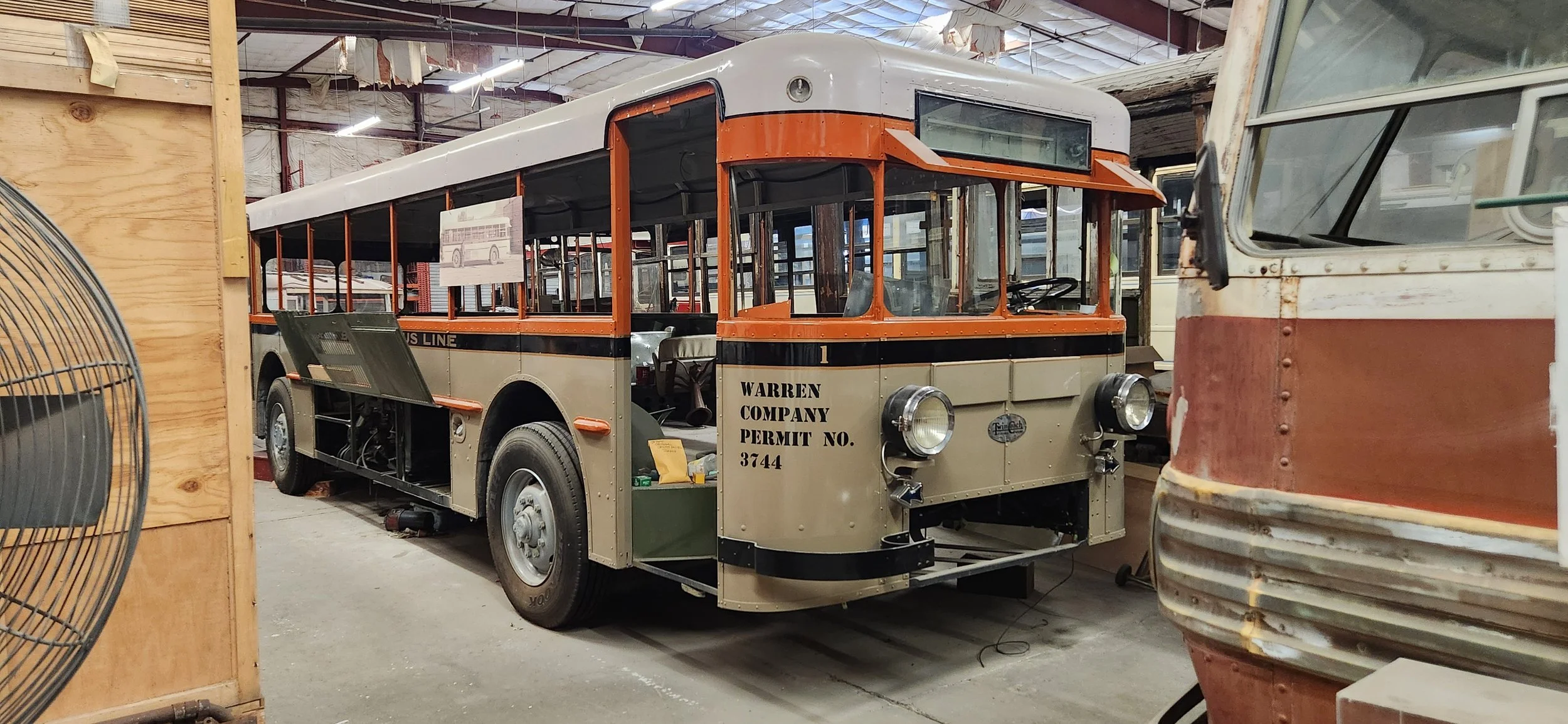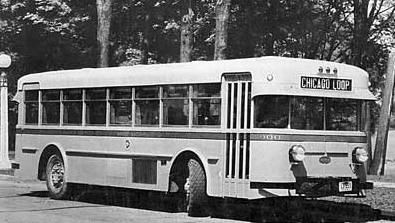Warren-Bisbee Bus Line #1
#1 in our collection, 2025
Background
In 1922, as the demand for intercity bus travel grew, Frank R. Fageol developed the highly successful Fageol Safety Coach. In 1927, foreseeing the need for a large capacity transit bus that could compete with the streetcar, he created the Twin Coach Company.
Engines capable of powering such a large vehicle were too heavy, causing it to exceed allowed weight limits in cities. This problem was solved by using two small engines in place of one larger one — hence the name Twin Coach.
The bus had to be as light as possible — the body and chassis were built as a girder-like unit, with two main beams from front to rear serving as stiffening members, a concept still in use today. Body and roof panels were of Plymetl, a metal-faced plywood material which reduced weight while adding impact resistance not obtained with thin steel or aluminum.
Since the bus had two motors, it required two transmissions, and two drive shafts, each of which drove its own axle worm. The transmissions were linked so they shifted together, and going around corners, one engine raced while the other idled. The axle was built by Timkin, and the engines were built by the Hercules Engine Co.
This innovative new bus could carry 40 passengers, hence why it was called the Model 40. It was very successful, with a total of 1,172 being built before production ceased in 1934. The other four major bus builders imitated it in style, but not performance and sales. Together they sold only 601 units.
One of the first Twin Coaches in Chicago, September 1927
Warren-Bisbee Bus Line employees pose in front of one of the Twin Coaches
Service History
What we know today as the city of Bisbee, Arizona was originally a number of small, separate mining settlements clustered in the copper-rich Mule Mountains in southeastern Arizona. The two largest, Warren and Bisbee, were about 6 miles apart and separated by ever-growing open pit mines. For 20 years, starting in 1908, the Warren-Bisbee Railway served the area. On June 1, 1928, the company name was changed to the Warren-Bisbee Bus Line when four 21-passenger, Studebaker buses and two 40-passenger Twin Coaches were substituted for the streetcars. The big buses were necessary to transport the large numbers of students going to Bisbee High School and workers to the mines at shift change times. The Studebakers were replaced by two 24-passenger model 1204 Yellow Coaches (#7-8) in 1938. They along with the Twin Coaches continued to serve through World War II. The larger capacity of the Twin Coaches was important to handle dramatically increased ridership during the war. In 1951 they were replaced by General Motors diesel buses.
Photo of badly vandalized bus when first discovered by Richard Francaviglia, Bisbee streetcar historian
Post-Service History
One of the Twin Coaches and Yellow Coach #7 were purchased by Orrin and Edna Soles of Warren. They placed them on property they owned on the road to Double Adobe, Arizona and started to convert the buses to a rural retreat. Unfortunately, vandals began to damage the buses and they soon gave up the project, leaving the buses to further vandalism and decay from the weather.
In July 1995 OPT contacted the Soles, who agreed to donate both buses. At about the same time a second Warren-Bisbee Yellow Coach (#8) was discovered. It was decided parts from #7 could be used to restore #8. In 1996, Old Pueblo Trolley applied for and was awarded a State of Arizona Heritage Fund grant to restore #8 and the Twin Coach. Several years later a 2nd Heritage Fund Grant was received. The two Heritage Fund Grants proved adequate to complete restoration of Yellow Coach #8, but additional money had to be found to complete the Twin Coach. That came in 2003 in the form of a Federal Transportation Enhancement Grant. As of today the work of restoring the Twin Coach by OPT Bus Division volunteers is done using that grant.
Restoration Status
#1 is mechanically sound and functional. The exterior has been painted. The interior is currently being restored.
Ownership Snapshot
Original Owner: Warren-Bisbee Bus Line #1
Acquired From: Orrin and Edna Soles in 1995
Current Livery: Warren-Bisbee Bus Line #1 (painted 2022)
Technical Specs
Year Built: 1928
Manufacturer: Twin Coach
Model: 40
Serial: 264
Powertrain: 2 Waukesha 6-cylinder 260 cu in gasoline engines with a Brown-Lipe 3-speed manual transmission
Body: Aluminum
Length: 32 ft 2 in
Width: 96 in
Seating: 40 passengers




